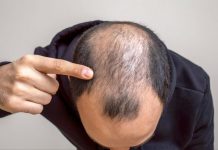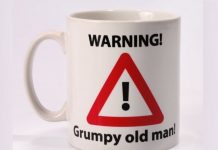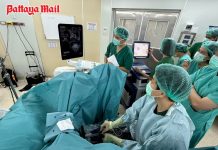Last year I received an email from a farang who was worried about his 17 year old daughter wishing to have the shape of her nose altered (known as a ‘rhinoplasty’).
I replied and (in part) wrote “Yes, there are always inherent risks with all surgical/anesthetic interventions, but honestly the risk in this case is so small as to be almost negligible. On a practical note, I agree with the decision to delay until she is 18 and can assume some responsibility for going ahead. Pick a certified cosmetic surgeon working out of an accredited hospital.”
This month I received another email, with him writing, “It gives me no pleasure to tell you that (my daughter’s) friend has been having serious problems with the nose augmentation requiring several doctor visits and long trips from Si Sa Ket (to the clinic). A second implant surgery to place ear cartilage has been necessary. I want to reaffirm to you that ‘…almost negligible’ DOES happen; and as you say, NO surgery is totally safe. Far too many folks, Thai and Farang alike, believe with today’s technology surgery is foolproof. They need a pharmaceutical dose of your wisdom that living life with a bit of a pixie (na-lak) nose shape (one that I personally prefer) isn’t worth ANY small risk of unnecessary cosmetic surgery.”
In my reply, first off, I am not going to get involved in criticizing either the surgeon or the clinic, neither of which I know. I will also emphasize that I did suggest “a certified cosmetic surgeon working out of an accredited hospital.” It does not sound as if this was the case here, but I repeat, I am not pointing any fingers in a case where I am not at all appraised of all details.
To give an idea of the chances of unsatisfactory outcomes, I have studied the results in my hospital, and also delved into other resources. It pleases me to report that our incidence of problems, for all our cosmetic procedures is very much less than one percent. For rhinoplasty, the figures for ‘real’ problems is even less. For the anesthetic risk, Dr David Wilkinson of the Association of Anesthetists of Great Britain and Ireland states, “Anesthesia is now very safe, with mortality of less than 1 in 250,000 directly related to anesthesia.”
However, do take heed of the fact that it can take two to four months for all swelling to go down after the surgery. In some cases, it can take up to a year before the patient knows exactly what their nose is going to look like. Some people become upset with the look of their post-operative nose in these first months, as crookedness and bumps may show up during the healing process. Most western surgeons recommend against going through any other procedures, such as revisions, for at least nine months after having nose job. This does not seem to have been the case in the situation you mentioned, and incidentally, my advice has always been one year.
You are quite correct, of course, when you write that adverse events DO happen; and as you say, NO surgery is totally safe. However, all of life has inherent risks. Using a pedestrian crossing in Pattaya being a prime example. It is up to the individual to understand the risks, and then decide for or against. With cosmetic surgery, which can be a life-changing event, the patient has to weigh up the risk versus the (hoped for) outcome. It is extremely important that the patient has realistic expectations of the final result, and to have that degree of maturity is, in my view, beyond the ken of a teenager.
It is also my belief that all prospective candidates for the cosmetic surgeon’s knife should have a psychological assessment before any surgery is carried out. That may sound hard, but unreal expectations are a much greater source of “problems” post surgery, than any problems related to the surgery itself.
However, all of us have a degree of vanity. Have you ever looked in the mirror and pulled at your cheeks to see what you would look like after a face lift? I am sure you have!




